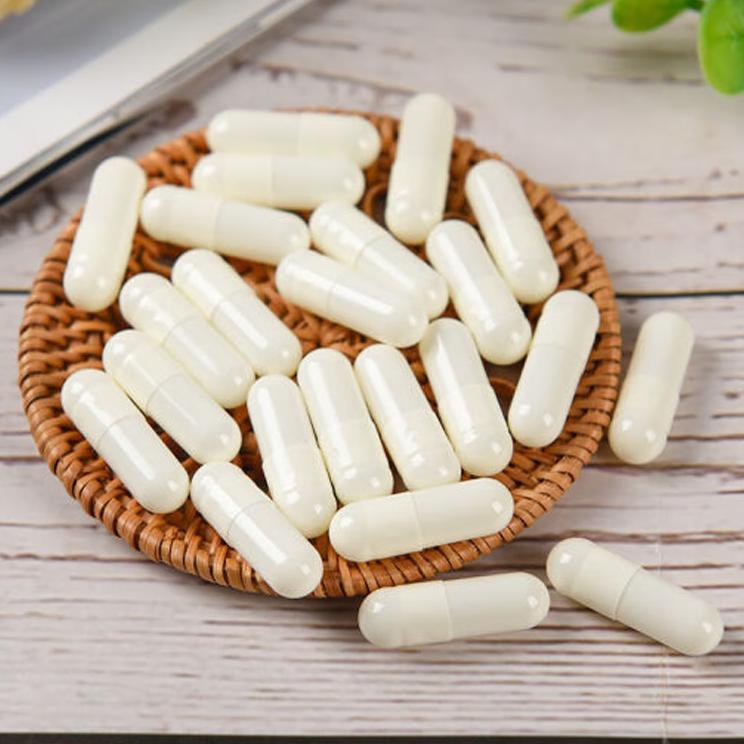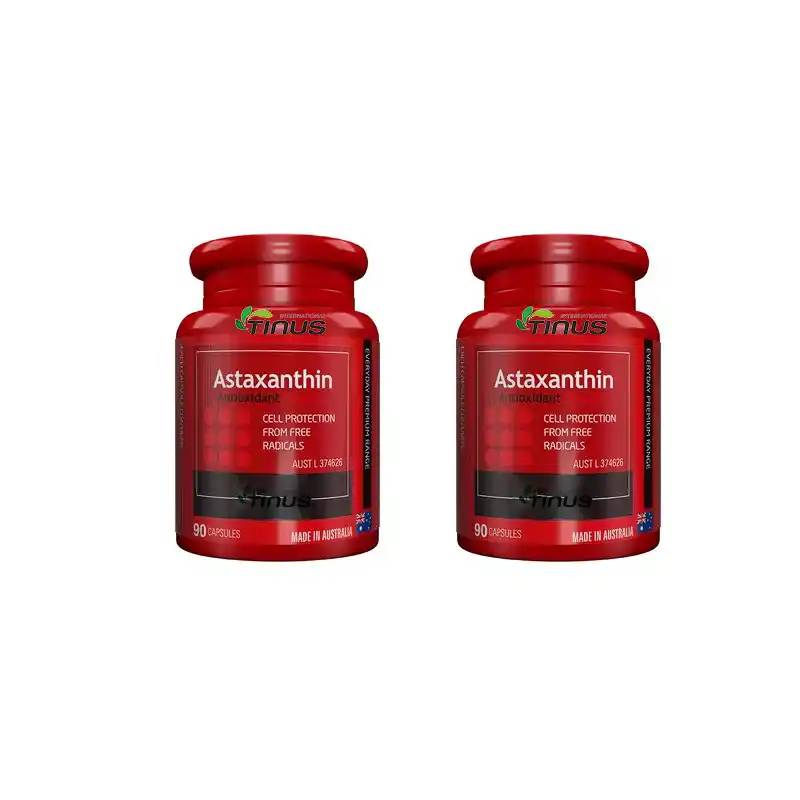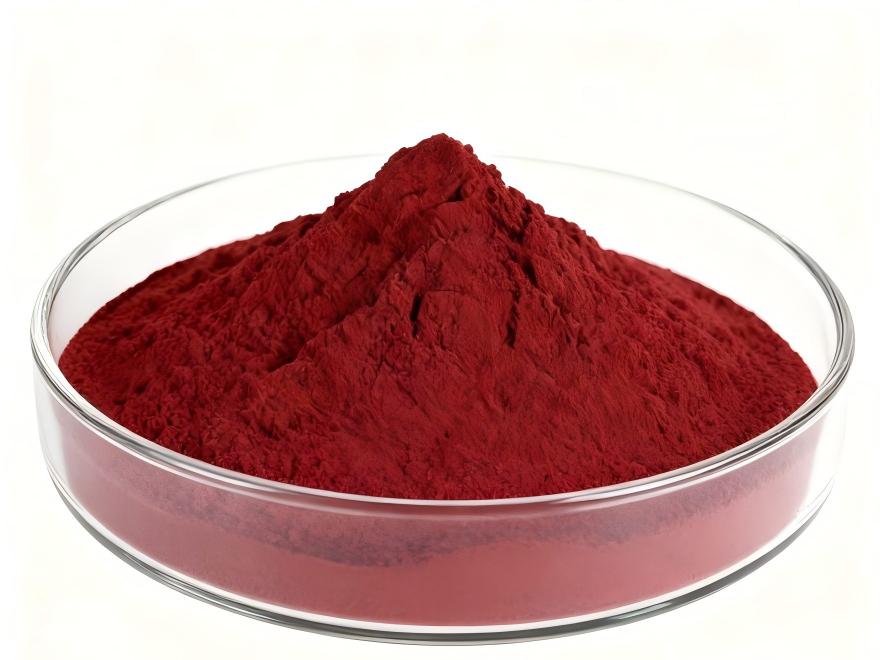Microencapsulated Astaxanthin Ingredients Empower Cosmetic Formulation Upgrades
today&で#39;s era where efficacy-driven skincare dominates the market, consumers increasingly prioritize products' actual results。 Authoritative market research reveals that over 78% of consumers focus on ingredient lists when purchasing skincare products, with “antioxidant” と“anti-aging” emerging as the most sought-after claims. Yet behind this ingredient craze, cosmetic formulators face formidable technical challenges.
Astaxanthin, a premier natural antioxidant with 6,000 times the potency of vitamin C and 800 times that of coenzyme Q10, has become a star ingredient in high-end skincare formulations. Yet its delicate nature poses significant formulation hurdles:
✦ Activity loss during production
· High shear forces during emulsification easily disrupt astaxanthin's molecular structure
· High-temperature sterilization processes degrade approximately 30-40% of active content
· Potential oxidation reactions when combined with other ingredients
✦ Shelf-life stability issues
· Under light exposure, astaxanthin's half-life is only 15-30 days
· Exposure to air after opening accelerates ingredient inactivation
· After 6 months of room-temperature storage, active ingredient retention often falls below 50%
✦Bioavailability bottlenecks
· Conventional astaxanthin struggles to penetrate the skin's stratum corneum, resulting in low actual absorption rates
· Prone to oxidation on the skin surface, preventing full antioxidant efficacy
“We've been searching for truly stable astaxanthin raw materials,” admitted the R&D director of a renowned brand. “Often, products meet content standards at the factory, but by the time they reach consumers, active ingredients have significantly degraded—directly impacting product efficacy and brand credibility.”
This industry pain point highlights the urgent market demand for innovative astaxanthin ingredients—requiring not only exceptional antioxidant capacity but also stability that withstands the entire lifecycle from production to use. Driven by this profound insight, Green Spring Technology is committed to providing fundamental solutions for the cosmetics industry through technological innovation.
1 Breakthrough Solution: Microencapsulation Technology Redefines Astaxanthin's Active Value
Addressing the active ingredient challenges in cosmetics, Green Spring Technology leverages its proprietary multi-layer composite microencapsulation technology to introduce astaxanthin ingredients specifically designed for premium skincare products. This approach fundamentally resolves stability and absorption rate issues for active components.
1.1 Innovative Technology System: Four-Dimensional Protection
Our microencapsulation technology employs a precise four-dimensional protection system to shield astaxanthin molecules comprehensively:
1.1.1 Molecular-Level Protection
· Utilizes nano-scale composite wall materials to form a dense protective layer just 200-500 nanometers thick on the astaxanthin molecule surface
· Achieves molecular-level adhesion between the protective layer and active ingredient through interfacial self-assembly technology
· Specially modified polysaccharide materials deliver exceptional mechanical strength, withstanding high shear forces during emulsification.
1.1.2 Environmental Stress Protection
· Thermal Stability: Retains 98.2% activity under 80°C sterilization conditions
· Light Stability: Component half-life extended to over 180 days under UV irradiation
· Oxygen Stability: Oxidative degradation rate reduced to under 5% in sealed systems
1.1.3 Smart Release System
· pH-Responsive Release: Precise delivery in skin's mildly acidic environment
· Enzyme-Triggered Mechanism: Utilizes skin's natural enzyme systems for intelligent active release
· Sustained-Release Kinetics: Ensures continuous delivery over 8 hours, extending efficacy duration
1.2 Performance Validation: Breakthrough Experimental Data
Through rigorous third-party testing and customer validation, our product demonstrates exceptional performance:
1.2.1 Stability Test Data
· Accelerated testing (40°C/75% RH) shows over 95% active ingredient retention after 6 months
· Encapsulation rate remains above 98.5% after 3 freeze-thaw cycles
· In simulated formulation systems, compatibility stability with common cosmetic ingredients reached 99%
1.2.2 Efficacy Validation Results
· In vitro skin models demonstrated transdermal absorption rate increased to 68.5%
· Human efficacy testing showed skin stratum corneum antioxidant capacity improved by 83% after 4 weeks of use
· Clinical evaluations revealed 42% improvement in wrinkle depth and 35% increase in skin elasticity

1.3 Formulation Advantages: Seamless Transition from Lab to Production Line
A Director of R&D at an international cosmetics company stated after testing: “This microencapsulated astaxanthin ingredient has completely transformed our understanding of active ingredients. It not only resolves the stability issues that have long plagued us, but more importantly, its exceptional formulation compatibility—maintaining outstanding stability in both water-based and oil-based systems—provides unprecedented scope for our product innovation.”
This technological innovation represents not only a major breakthrough in the astaxanthin ingredient field but also provides the cosmetics industry with a comprehensive active ingredient solution. By ensuring active ingredient integrity throughout the entire lifecycle—from raw material to finished product, and from production to application—we are empowering cosmetics companies to make the crucial leap from “ingredient marketing” to “real efficacy,” driving the industry toward higher standards.
2 Microencapsulated Astaxanthin Ingredient Creates Multi-Dimensional Competitive Advantage for Cosmetic Brands
The value of Green Spring Technology's microencapsulated astaxanthin lies in its comprehensive enhancement for brand clients. Based on collaboration data with over 20 renowned cosmetics companies, we summarize its notable market outcomes:
2.1 Enhanced Product Performance: Transforming Ingredients into Proven Efficacy
2.1.1 Delivering Verifiable Efficacy Claims
· Third-party testing confirms exceptional results in 28-day clinical trials:
· Reduced skin moisture loss by 32%
· Improved wrinkle visibility by 41%
· Enhanced skin radiance by 56%
2.1.2 Establishing Technical Barriers
· Microencapsulation technology provides exclusive patent protection
· Differentiated formulation design makes imitation difficult
· Builds a professional, technology-driven brand image
2.2 Market Competitiveness Upgrade
2.2.1 Enhancing Product Premium Pricing
· Average order value for premium series using this ingredient increased by 25-40%
· Repurchase rate rose to 1.8 times the industry average
· Achieved differentiated breakthroughs in the highly competitive anti-aging market
2.2.2 Strengthening Consumer Trust
· 91% of consumers recognize efficacy assurance from “microencapsulation technology”
· Mention rate of “noticeable results” in product reviews increased by 67%
· Customer complaint rate reduced to 0.3%
2.3 Production and Quality Control Optimization
2.3.1 Standardized Production Processes
· Coefficient of variation between raw material batches <2%
· Adaptable to diverse production process conditions
· Significantly reduced defective product rate caused by raw material instability
2.3.2 Supply Chain Assurance
· Raw material shelf life extended to 24 months
· Reduced storage environment requirements
· Minimized losses from temperature fluctuations
A founder of an emerging brand shared after implementation: “After introducing Green Spring Technology's microencapsulated astaxanthin, our flagship product topped the platform's anti-aging category sales charts within three months of launch. Consumers' most direct feedback was ‘visible results,’ giving us a breakthrough in this highly competitive market.” "
Notably, these benefits are elevating industry standards. A testing agency director noted: ‘Products using stabilized ingredients maintain significantly higher active ingredient retention rates throughout their shelf life compared to traditional formulations, establishing a new quality benchmark for the industry.’

3 Connect with Green Spring Technology to Unlock New Possibilities in Cosmetic Formulations
In the era of ingredient-driven skincare, let your products stand out with genuinely visible efficacy. Green Spring Technology's microencapsulated astaxanthin ingredients are ready to infuse your next star product with technological innovation.
Contact us now for personalized support
We've prepared a seamless onboarding process to help you launch your project effortlessly:
★ Free sample trial
· Receive ready-to-use microencapsulated astaxanthin samples
· Experience its exceptional dispersibility and formulation compatibility firsthand
· Conduct preliminary testing and evaluation within your system
★ Dedicated Technical Resource Package
· Access detailed Technical Data Sheets (TDS) and Material Safety Data Sheets (MSDS)
· Review third-party efficacy validation reports and clinical test data
· Obtain reference formulation suggestions for various dosage forms (serums, creams, lotions)
★ One-on-One Technical Consultation
· Communicate directly with our application engineers for tailored solutions
· Discuss your specific formulation needs and product concepts
· Resolve technical challenges encountered during development
Contact us to begin collaboration
Green Spring Technology Cosmetic Ingredients Division
· Service Hotline: +86 29 88313578
· Mobile/WhatsApp: +86 13649243917 (Efficient real-time communication)
· Business Email: helen@greenspringbio.com (Send detailed requirements)
· Official Website: https://www.greenspringnatural.com/ (Explore more technical information)
Reach out today to receive samples and technical documentation—take the first step toward product enhancement. Let's collaborate to transform your ideas into the next market-disrupting star product!
参考:
[1] li m, wu w j, zhou p p,et al.対照astax—anthinとhaematococcus pluvialisonの成長性能、antiox—idant状態および大型イシモチの免疫応答—ciaena crocea[j]。^『仙台市史』通史編、仙台市、2014年、434 -232頁
[2] higuera-ciapara i, felix-valenzuela l, goycoolea f アスタキサンチン(astaxanthin)は、化学の一種である and アプリケーション[J]。^「review in food science and nutrition, 2006」。food science and nutrition (2006) . pp . 185-196 . 2014年3月18日閲覧
[3] hama s, takahasha k, inai y, et al。topi—calの保護効果紫外線による皮膚損傷に対する難溶性抗酸化剤アスタキサンチンリポソマル製剤の適用[j]。^「journal of phar—maceutical sciences, 2012, 101(8): 2909—2916」。journal of phar—maceutical sciences(2012年). 2012年9月29日閲覧
-
Prev
Green Spring Technology Establishes Fully Traceable Supply Chain for Astaxanthin Raw Materials
-
次
Five Key Innovation Directions for Astaxanthin Raw Materials in the Coming Years


 英語
英語 フランス
フランス スペイン
スペイン ロシア
ロシア 韓国
韓国 日本
日本




